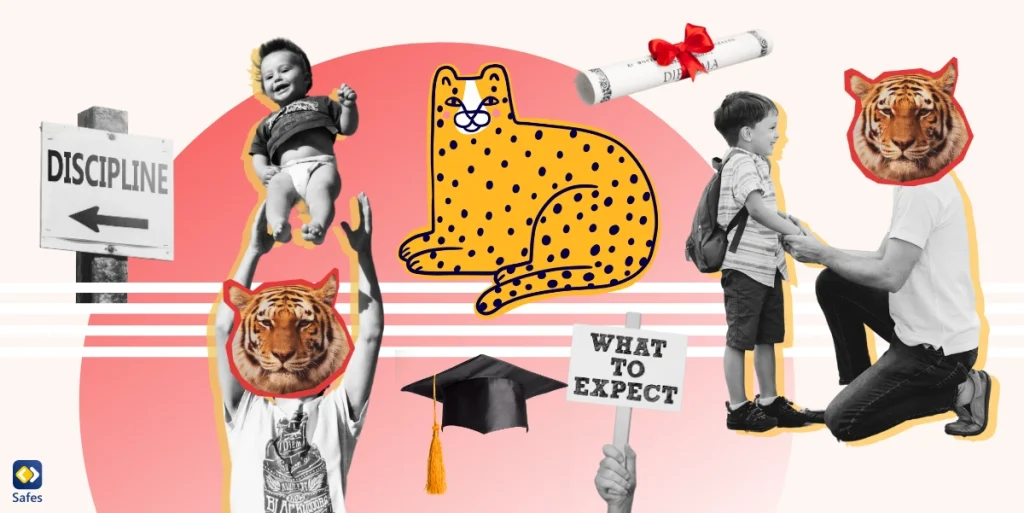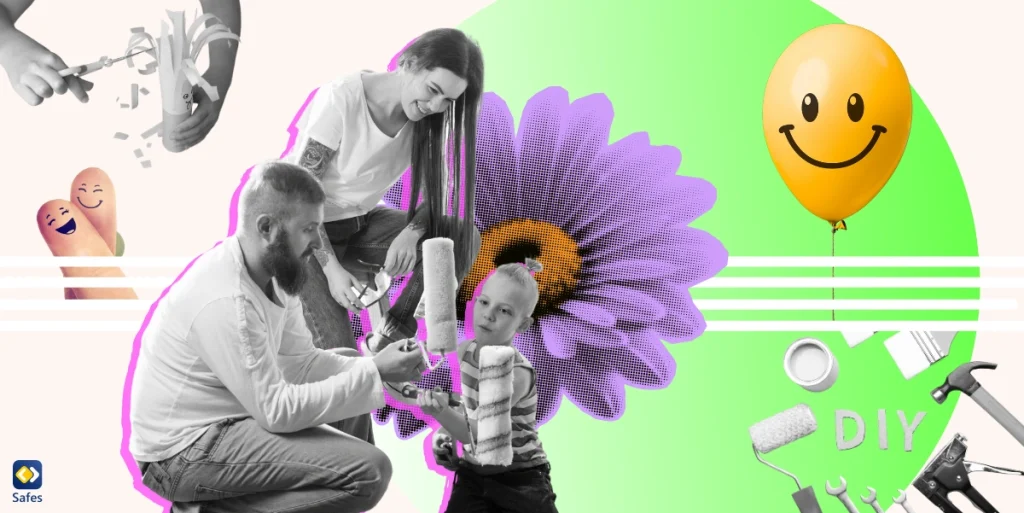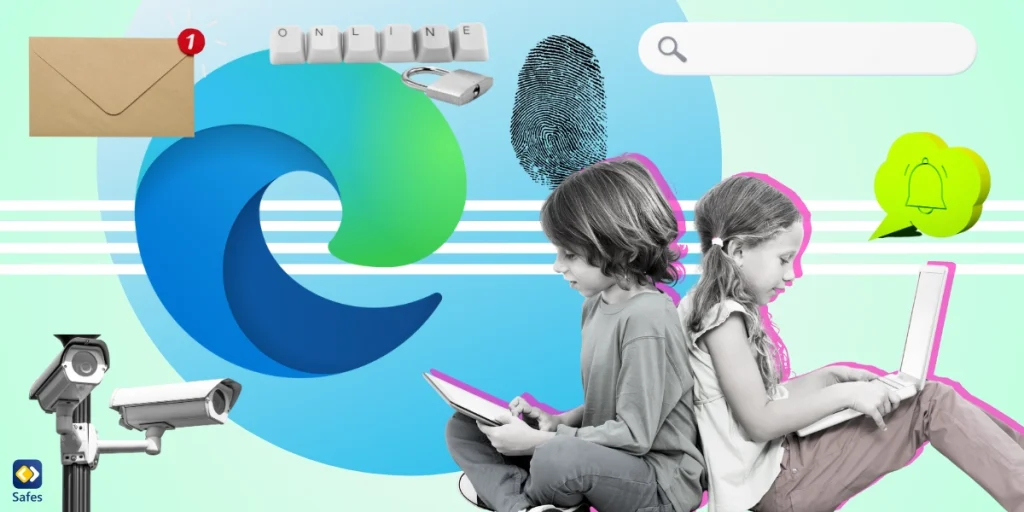As a parent, you may have experienced moments when your child simply won’t listen to you. It can be frustrating and challenging to deal with a child who seems to ignore your instructions or refuses to follow the rules. The goal of this article is to provide practical tips and strategies on how to discipline a child who won’t listen. To delve deeper into the subject, we have discussed toddlers’ disobedient behaviors with Dr. Robert E. Larzelere.
Dr. Larzelere is a professor of human development and family science at Oklahoma State University. With over 30 years of research experience, his work primarily focuses on parental discipline of young children. He has made significant contributions to the field, particularly in understanding the balance between consistent consequences and gentle, verbal correction in parenting.
Whether you’re a new parent or an experienced one, this guide will help you understand how to handle difficult behavior and encourage positive change.
Understanding Why Children Don’t Listen and How to Discipline Them
Children not listening is a common challenge that parents face. Regardless of the age range for which you need to provide discipline—for example, three years old, seven years old, or five years old, It all boils down to the same thing, “Toddlers are expressing their new independence. Parents need to allow them to have some influence, but to channel their independence toward interdependence with people around them,” says Dr. Larzelere.
Some possible reasons for children not listening include the following:
- Lack of attention or focus
- Testing boundaries and seeking attention
- Overstimulation or fatigue
- Developmental issues or learning disabilities
Recognizing patterns and triggers can help you understand why your child is not listening and how to address the behavior effectively. For example, if your child tends to misbehave when they are tired, you may need to adjust their schedule or limit their activities. If your child seeks attention by misbehaving, you may need to provide positive attention and praise for good behavior instead.
Dr. Larzelere suggests that toddlers who show the most defiant behavior are often the ones who most need parental love and understanding.
“The most defiant toddlers are the children who need parental nurturance and understanding the most, but they can be the most difficult toddlers to love. These toddlers also need appropriate consistent disciplinary consequences the most, without going to either extreme of being too punitive on the one hand or too lax on the other hand.”
Effective communication is also essential when disciplining a child who doesn’t listen. You need to be clear and consistent with your expectations and use positive reinforcement to encourage good behavior. It’s also important to listen to your child’s perspective and feelings and to communicate in a respectful and calm manner.
In conclusion, disciplining a child who doesn’t listen can be a challenge, but with patience, consistency, and effective communication, you can develop a positive and respectful relationship with your child while also promoting their healthy development.

What to Do When Kids Don’t Listen: Positive and Effective Discipline Techniques
Discipline is an essential aspect of child development. It helps children learn right from wrong, develop self-control and respect for others, and become responsible adults. Effective discipline requires patience, consistency, and a clear understanding of what works best for your child.
When kids don’t listen, it can be tempting to resort to harsh punishment or yelling. However, positive and effective discipline techniques can help encourage better behavior and promote healthy development. Here are some techniques to consider:
- Making compromises: For toddlers, especially those who often show oppositional and defiant behavior, redirection or verbal compromises can be effective in the short term to defuse a discipline situation. However, if these methods are used excessively, particularly in response to defiant behavior, they can be counterproductive.
“Redirecting or verbal compromises… are counterproductive later only if used too often in response to defiance. Toddlers who are often oppositional and defiant need to learn that they cannot always get a compromise to their liking,” says Dr. Larzelere.
- Time-Outs: This involves removing the child from the situation to a designated area for a brief period to calm down and reflect on their behavior. Time-outs should be brief and age-appropriate (½ to 1 minute for each year of the child’s age) and always followed by a conversation about the behavior and a positive redirection.
- Negative Consequences: This involves consequences that are logically related to the behavior. For example, if a child refuses to pick up their toys, they may lose the privilege of playing with them for a while.
However, assessing the situation here is key. That’s why, according to Dr. Larzelere, “Negative consequences are counterproductive when toddlers are negotiating or whining (which is the way toddlers often negotiate).”
- Reasoning: Ultimately, you can try to reason with your child when they’re being difficult. However, it’s been proven to be less effective. According to Dr. Larzelere:
“In response to defiance in toddlers, reasoning is the least likely tactic to get immediate compliance, but it is good to try it briefly anyway before applying a negative consequence to teach a defiant child to listen to verbal disciplinary corrections next time.”
Effective discipline techniques require patience, consistency, and a focus on positive behavior. It’s also important to communicate with your child, listen to their perspective, and show empathy and understanding. By using these techniques, you can help your child develop self-control, respect for others, and positive behavior.
How to Discipline Children: The Importance of Avoiding Harmful Discipline Strategies
Disciplining children is an important part of parenting, but it’s essential to avoid harmful strategies that can cause long-term emotional and psychological harm. However, this doesn’t mean that parents should allow their children to do whatever they like. Let’s see what Dr. Larzelere thinks about the role of fear in parenting:
“A little fear of parents can be a good thing, especially for strong-willed children. Verbal resolutions are best, but the child has to fear the parent just enough to pay attention to the explanation or accept the compromise (or lack of one). If parents back up verbal disciplinary responses with concrete negative consequences when necessary, this creates what Dr. Martin Hoffman called “background power assertion.” What he meant was that the history of a parent responding to persistent defiance with negative disciplinary consequences cause children to pay more attention to the kinds of verbal disciplinary resolutions that should be preferred.”
Here are some strategies to avoid:
- Physical punishment: This includes spanking, hitting, or any other form of physical discipline. Physical punishment can cause physical harm, emotional trauma, and teach children that violence is an acceptable way to solve problems.
Regarding physical punishment, Dr. Larzelere says: “Psychologists used to enforce cooperation with timeout with a 2-swat spank for 2- to 6-year-olds. That has fallen out of favor, but the old way of handling defiance was twice as effective as is the case now.” In the modern day, however, “a brief 1-minute isolation in a safe boring room is the only enforcement shown to be as effective as the traditional spank back-up.”
- Shaming and belittling: This involves using insults or derogatory language to criticize children’s behavior. Shaming and belittling can damage children’s self-esteem and lead to long-term emotional and psychological harm.
- Withholding love and affection: This involves using love and affection as a reward for good behavior and withholding it as a punishment for bad behavior. Withholding love and affection can cause children to feel unloved and unwanted, leading to long-term emotional and psychological harm.
Effective discipline strategies should start with “age-appropriate verbal resolutions.” If the child still insists on their behavior, you can proceed to negative consequences, which come after a “short warning.” In severe cases, force may be needed to “put them on the timeout chair or to put them back on the chair”.
It’s also important to communicate with children, listen to their perspectives, and show empathy and understanding. By avoiding harmful discipline strategies, parents can help their children develop self-control, respect for others, and positive behavior while promoting healthy emotional relationships.

Ways to Discipline a Child: Strategies for Maintaining Consistency and Follow-Through
Disciplining a child requires consistency and follow-through to be effective. Here are some strategies to help maintain consistency and follow-through:
- Creating a Routine: Establishing a consistent routine can help children know what to expect and what is expected of them. This can include consistent bedtimes, mealtimes, and homework times. When children know what is expected of them, they are more likely to comply with rules and expectations.
- Staying Calm and Focused: It’s important to stay calm and focused when disciplining a child. Yelling, threats, or physical punishment can be ineffective and harmful. Instead, use a calm and firm tone and focus on the behavior you want to address. Avoid getting sidetracked by unrelated issues or emotions.
- Working with Caregivers and Teachers: Consistency is key, and working with caregivers and teachers can help maintain a consistent approach to discipline. Make sure everyone is on the same page regarding expectations and consequences. Communicate regularly and work together to address any challenges.
- Monitoring Progress: Regularly monitoring progress can help you adjust your approach as needed. Keep track of what is working and what is not, and adapt your approach accordingly. It’s important to recognize and praise positive behavior and be consistent with consequences for negative behavior.
Maintaining consistency and follow-through is essential for effective discipline. By creating a routine, staying calm and focused, working with caregivers and teachers, and monitoring progress, you can help your child develop positive behavior and respect for others.
Disciplining a Child: The Benefits of the Safes Parental Control App
Disciplining a child that won’t listen can be challenging for parents. The Safes parental control app offers several tools to help parents discipline their children effectively. By using the Safes parental control app, parents can effectively discipline their child that won’t listen. The screen time monitoring tools can help enforce healthy device usage habits, while the app and web blocker can ensure that the child is not exposed to harmful content. The safe search feature can also help to protect the child from inappropriate material. With these tools, parents can create a safe and healthy digital environment for their children.
Safes is available on all Android and iOS devices. Use the following resources to learn how to use Safes for your child’s benefit:
- Windows parental controls
- Macbook parental controls
- Parental controls on Android
- iPhone parental controls
Start using Safes today with our free trial and empower your parenting efforts with peace of mind and effective digital supervision.
Conclusion: How to Discipline a Child That Won’t Listen
In conclusion, disciplining a child that won’t listen can be a challenging task for parents. However, with the right strategies and tools, it is possible to discipline them effectively. Creating a routine, staying calm and focused, working with caregivers and teachers, and monitoring progress are key strategies for maintaining consistency and follow-through. Additionally, parental control apps such as the Safes app can be helpful in limiting screen time, blocking inappropriate content, and promoting safe digital habits. By combining these strategies and tools, parents can create a positive and healthy environment for their children to grow and develop. Ultimately, effective discipline requires patience, consistency, and a commitment to helping the child learn and grow.




